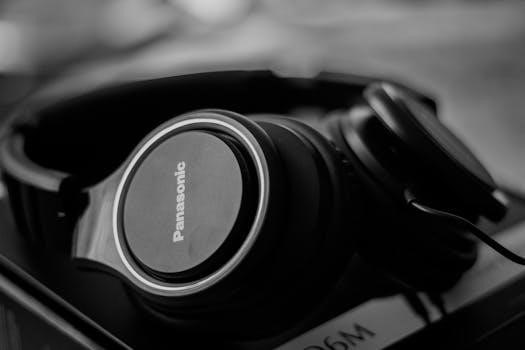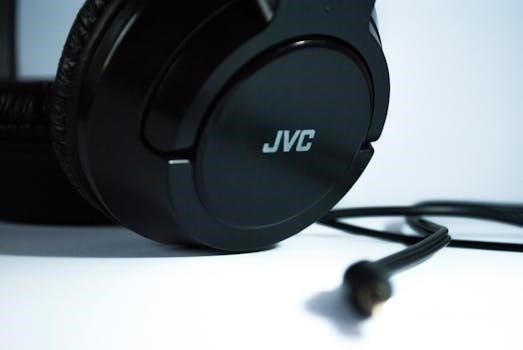Boat Stereo Wiring Guide⁚ A Comprehensive Overview
This guide provides a step-by-step approach to boat stereo wiring, covering basic principles, identifying wiring using color codes, locating power and ground sources, and using wiring diagrams effectively for successful and safe installation․
Understanding Boat Wiring Diagrams
A boat stereo wiring diagram is a visual representation of the electrical system for your boat’s stereo․ It illustrates where wires should be connected, ensuring proper installation and optimal performance․ These diagrams are crucial for understanding how each component of the stereo system functions and how they interconnect․
A marine stereo wiring diagram offers a clear overview of the connections between different components of the boat’s stereo system․ It’s essential for both new installations and troubleshooting existing systems․ By following a wiring diagram, boat owners can avoid costly mistakes and ensure a reliable audio system․ Diagrams are especially helpful when tracing electrical faults or upgrading components․
The older the boat, the more critical it becomes to have an accurate wiring diagram, as older systems may lack documentation or have inaccurate information․ Using a diagram saves time and frustration by providing a step-by-step guide for connecting speakers, amplifiers, and other components correctly․ Understanding these diagrams ensures a well-functioning and enjoyable stereo system on the boat․

Basic Principles of Boat Stereo Wiring
When wiring a boat stereo, understanding basic electrical principles is crucial․ This includes knowing about voltage, current, resistance, and polarity to ensure a safe and functional audio system on your boat․
Identifying Wiring⁚ Color Codes and Functions
Identifying wires correctly is paramount for a successful boat stereo installation․ Standard color codes are used for different functions․ Typically, yellow is for constant power (12V+), red is for switched power (ignition), black is for ground, and blue is for remote turn-on for amplifiers․
Speaker wires often have paired colors⁚ a solid color for positive (+) and the same color with a black stripe for negative (-)․ Using a multimeter can verify wire functions, especially in older boats where colors might have faded or been altered․ Always consult your stereo’s wiring diagram for specific color assignments․
Understanding wire gauges is also essential․ Thicker wires are needed for power and ground to handle higher currents, while thinner wires are suitable for speakers․ Proper identification and connection of wires prevent damage to the stereo and ensure optimal performance, enhancing your boating experience with quality sound․

Locating Power and Ground Sources on a Boat
Finding reliable power and ground sources is crucial for your boat stereo․ Identify a clean, stable 12V power source and a solid grounding point to minimize noise and ensure optimal performance․
Using Wiring Diagrams Effectively
Effectively using a boat stereo wiring diagram is essential for a successful installation․ Begin by familiarizing yourself with the diagram’s symbols and notations․ Each component, wire, and connection point is represented by a specific symbol, and understanding these symbols is critical․
Carefully trace the wiring paths from the power source to the stereo unit and then to the speakers, amplifier, and other accessories․ Pay close attention to the color codes of the wires, as these indicate the function of each wire․ The diagram will also show the proper connections for positive and negative terminals․
Before making any connections, double-check the wiring diagram to ensure you have a clear understanding of the system’s layout․ Use a multimeter to verify the voltage and continuity of the wires to avoid any potential short circuits or damage to the components․ If you encounter any discrepancies between the wiring diagram and the actual wiring in your boat, consult with a qualified marine electrician․

Connecting Power Wires to the Boat Stereo
Properly connecting the power wires is essential for the stereo to function․ This involves connecting the positive, negative (ground), and remote turn-on wires to the appropriate terminals on the stereo and the boat’s electrical system, ensuring correct polarity․
Connecting Speaker Wires⁚ Positive and Negative
Connecting speaker wires correctly is crucial for sound quality and preventing damage to your stereo system․ Speaker wires typically come in pairs, with one wire designated as positive (+) and the other as negative (-)․ Maintaining the correct polarity throughout the wiring process is important․
Most speaker wires are color-coded, often with a solid color for positive and the same color with a black stripe for negative․ Refer to your stereo and speaker manuals to confirm the color codes used․ Connect the positive wire from the stereo’s speaker output to the positive terminal on the speaker․ Similarly, connect the negative wire from the stereo to the negative terminal on the speaker․
Incorrect polarity can cause the speakers to be out of phase, resulting in weak bass and poor sound imaging․ Ensure all speakers are wired with the same polarity․ Use a wiring diagram to double-check connections․ Secure connections with wire connectors or solder to prevent loose connections and signal loss․ Remember consistent polarity!
Installing Fuses for Protection
Installing fuses is essential for protecting your boat stereo system from electrical damage․ Fuses prevent overcurrent situations, safeguarding components․ Choose the correct fuse amperage rating based on your stereo’s specifications for optimal safety․
Proper Grounding Techniques for Marine Environments
Proper grounding is crucial in marine environments to prevent corrosion and ensure the safe operation of your boat stereo system․ Marine environments are harsh due to saltwater’s corrosive nature, which can quickly degrade electrical connections․ A well-executed grounding system minimizes the risk of galvanic corrosion, where dissimilar metals react and cause damage․
First, select a suitable grounding point on the boat, preferably the main grounding bus or the engine block․ Ensure this point is clean and free from paint or rust to provide a solid electrical connection․ Use marine-grade wiring, which is tinned to resist corrosion, and crimp connectors designed for marine use․ Apply dielectric grease to all connections to further protect against moisture and corrosion․
Connect all stereo components, including the head unit, amplifier, and any other accessories, to this central grounding point․ Avoid creating multiple ground loops by grounding each component separately to different locations, as this can introduce noise into the system․ Regularly inspect and maintain all grounding connections to ensure they remain tight and corrosion-free․
Implementing these techniques will help maintain a safe and reliable electrical system for your boat stereo, extending its lifespan and performance․ Good grounding minimizes electrical noise and improves audio quality․
Integrating an Amplifier into the Boat Stereo System
Integrating an amplifier enhances audio performance, requiring careful wiring for power, signal, and remote turn-on․ Proper connections are vital for optimal sound quality and preventing electrical issues in the boat’s system․
Troubleshooting Common Wiring Issues
Troubleshooting boat stereo wiring involves diagnosing issues like no power, distorted sound, or intermittent connectivity․ Begin by inspecting fuses for any signs of damage, replacing them if necessary․ Then, verify that the ground connection is secure and free from corrosion, ensuring proper electrical grounding․
Check the power wires for continuity, ensuring there are no breaks or loose connections․ If the stereo turns on but produces no sound, inspect the speaker wires for proper connections and potential damage․ Use a multimeter to test voltage at various points in the circuit to pinpoint the source of the problem․
Examine the wiring harness for any frayed wires or loose connections, repairing or replacing them as needed․ If integrating an amplifier, ensure the remote turn-on wire is correctly connected and functioning․ Remember that thorough inspection and systematic testing are essential for resolving wiring issues effectively․

Weatherproofing Connections for Longevity
Protecting boat stereo connections from moisture and corrosion is vital for longevity․ Utilize marine-grade heat shrink tubing, waterproof connectors, and dielectric grease to seal connections․ Regularly inspect and maintain these connections to prevent future issues․
Adding a Second Battery for Enhanced Power
Adding a second battery to your boat stereo system provides dedicated power, preventing drain on the starting battery․ This ensures reliable engine starts and uninterrupted audio enjoyment․ Consider factors like battery type (deep-cycle recommended), capacity, and physical space when selecting the battery․
A battery isolator or automatic charging relay (ACR) manages charging between batteries․ The isolator prevents the stereo from draining the starting battery, while the ACR automatically connects batteries for charging when the engine runs․ Wiring involves connecting the second battery in parallel, maintaining a 12V system․
Run appropriately sized marine-grade cables from the second battery to the stereo system․ Include a fuse near the battery to protect against short circuits․ Proper grounding is crucial; connect the second battery’s negative terminal to the boat’s grounding system․ Secure all wiring and components to prevent vibration damage․
Regularly inspect the batteries, connections, and charging system to ensure optimal performance․ Adding a second battery significantly enhances the power and reliability of your boat stereo system, allowing for extended listening without compromising starting power․
